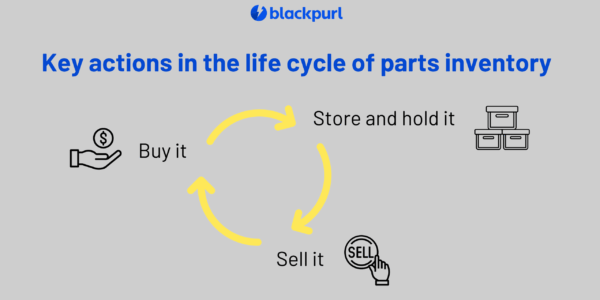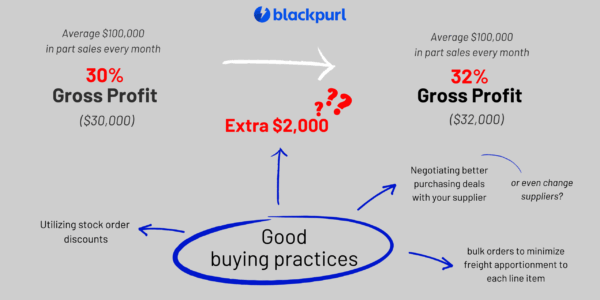Inventory turn rate
Aim for 2-3 economic turns and 5-6 physical turns. Yet, many dealers fall short. Believe me when I say that my experience in recent years has shown me that most medium-size dealers are overstocked by at least $250,000 in comparison to best practices. This results in costs at 5% and interest at $12,500.
Adding these up potentially saves you: $24,000pa + $37,500pa + 12,500 = $74,000.
Even if you spent that money to employ somebody to focus on more efficient buying and holding practices, you cannot ignore the hidden cost savings from customer service improvements, reduced warehousing costs, and service technician productivity.
As I mentioned earlier there is a lot more detail on how to manage your inventory well, but the dollar savings do make a compelling argument to become more curious about this subject. The knowledge is available to you but you have to be willing to seek it out.
Get to know Marc!
Hello, my name is Marc Storey and I have been working with the Blackpurl team for a couple of years now. It has been an incredible journey.
To give a quick rundown of myself, I started my work career as a heavy equipment mechanic. In my early 20’s I started my own earthmoving equipment repair business. The business grew into a parts and service enterprise and eventually an Earthmoving Equipment Dealership. Several years later my wife and I started another business which was a Heavy Truck Dealership.
Over the following decades, our lifelong passion for motorcycling led us to a unique journey – we bought and developed a poor-performing Truck Dealership, which we sold after turning the performance around. Our last Dealership adventure was a greenfield business that has grown into a multi-franchise motorcycle business operating in three separate locations.
After exiting the business to allow our son to take over the management of the business, I found an opportunity to work with a Dealership Software development team at Blackpurl to help them create a new product. This experience has been invaluable in improving my understanding of how dealership software systems work and how problems for Dealers can be solved.
My interest in creating dealer management systems that ensure a smooth-running Dealership was an important ingredient in my business career success. Those skills are now helping me to mentor other Dealers and their staff on how to improve the management systems in their business and create a more valuable enterprise.





